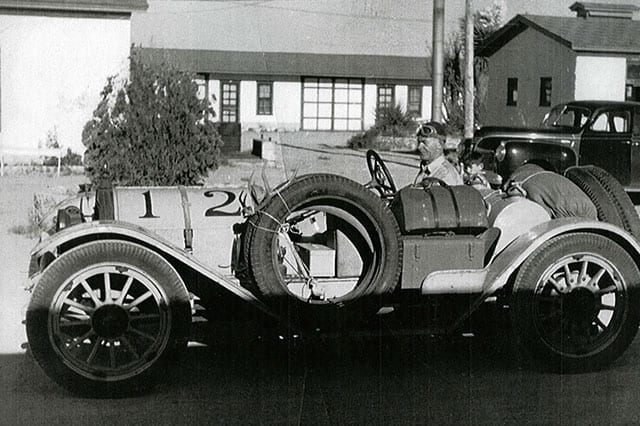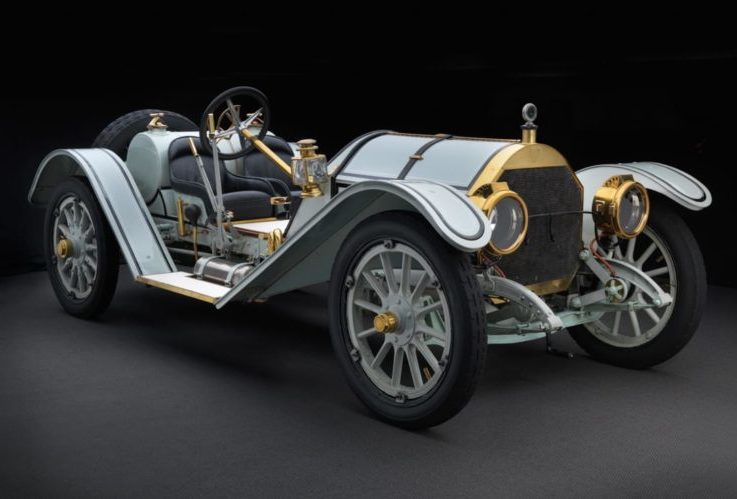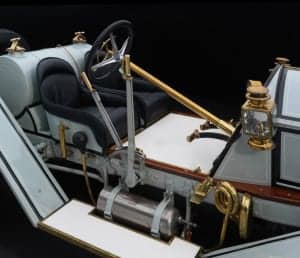Tech Specs
Four-cylinder in-line T-head engine, 300 cubic inches, 58 hp at 1700 rpm.
Before/After
1912 Mercer


About the 1912 Mercer Model 35-C Raceabout
Say “Raceabout” and the Pavlovian response is invariably Mercer, just as “Bearcat” says Stutz. Fittingly, these two cars were intense rivals. It is moot which was the better performer. Visually, the Raceabout was the clear winner.
The Mercer’s aesthetic triumph is interesting because there’s not much to the car – a hood up front, a gas tank in back, fenders alongside, a couple of bucket seats in-between, a monocle windshield for the driver. These were the barest essentials for sports motoring, but their symmetry is sublime – and the look less brutish than the Bearcat’s.
Inside the cockpit are clutch and brake pedals and steering wheel; outside are shift and brake levers and accelerator pedal. Capable of 70+ mph, the Raceabout preferred going to stopping. Like most sporting machines of its era, brakes were a weak point – though stomping on the pedal and pulling hard on the hand lever usually averted disaster. The Raceabout was a driver’s automobile. The passenger held on for dear life.
Mercers were built in the city of Trenton in Mercer County, New Jersey. Backing the company were the Roebling and Kuser families, whose previous credits included the Brooklyn Bridge. The Raceabout idea belonged to Washington A. Roebling II; its realization to talented, self-taught engineer Finley Robertson Porter. Raceabouts accounted for about 150 of the approximate 500 car annual Mercer production. In 1911 Raceabouts won five major races…out of six entered. In 1912 professional driver Ralph De Palma set eight new world class records with a Raceabout in Los Angeles, while amateur driver Spencer Wishart bought one off the showroom floor in Ohio for $2500 and promptly set four more records in Columbus.
The Raceabout’s success prompted Mercer to develop special versions for competition. Most historians consider the subsequent Bearcat-Raceabout battle to have been a draw. Meanwhile, in 1914, Eric Delling, Porter’s successor at Mercer, redesigned the Raceabout from T-head to L-head engine and added such creature comforts as doors, full length windshield, bench seat, even shock absorbers. Now it was possible, the company said, to thread a needle at speed. Yet a real sport preferred Porter’s T-head…and holding on for dear life.
Photos – Peter Harholdt










